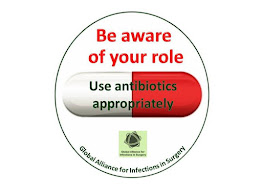Overview Of Antibiotics Stewardship
Antibiotic stewardship is the systematic effort to educate and persuade prescribers of antibiotics to follow evidence based prescribing in order to stem antibiotics overuse, and thus antibiotic resistance. It means prescribing the right drug, dose, time for the right duration.
Antibiotics stewardship
There are different antibiotic stewardship programmes and intervention aim to optimise antibiotic use. These programmes focus on doctor's office, pharmacists, nurses, hospital, long term care facilities and other health care settings.
Read Also: Does ampiclox use drain blood
The programme is very important. If followed, it will prevent antibiotic resistance and therefore prevent shortage of drugs.
Antibiotic Resistance
The more a bacteria is exposed to an antibiotic agent, the more it adapts that it no longer suffers the consequence of the antibiotic agent. This happens when the drug is abuse and misuse. Abuse and misuse include wrong drugs, wrong dose, wrong duration and wrong frequency. Antibiotic stewardship prevents antibiotic resistance by correcting right prescriptions.
Goals
The goals of antibiotic stewardship include:
1. Enhance patient health outcomes (safety, adverse effects)
2. Reduce antibiotic resistance
3. Reduce cost
4. Reduce treatment failure
Core Elements
There is a core element that guides hospitals on antibiotic stewardship programmes. They are constantly updated as more information becomes available as to each process. The last update was done in the year 2014. It was adapted from data obtained from different hospitals on the implementation of the programme, the setbacks and benefits to all.
Implementation of this programme requires flexibility due to the complexity of medical decision-making surrounding antibiotic use and the variability in the size and type of care. It is intended to be an adaptable framework that hospitals can use to guide efforts to improve antibiotic prescribing.
Hospital Core Elements
1. Hospital Leadership Committee: each hospital that intends to adopt antibiotic stewardship should as a matter of importance have a leadership committee. The committee should be made up of a dedicated human, finance and information technology for the programme. The leadership committee can come from a medical doctor, pharmacist, nurse or any other medical personnel that have the above qualities.
2. Accountability: there should be a co-leader who is responsible for the programme management and outcome. It is suggestive to bring in a pharmacist at this level if not part of the committee leadership already. This helps to include pharmacy expertise into the programme.
3. Action: here it is time to implement the intervention such as prospective audit and feedback or pre authorisation to improve antibiotic use. There are two types of intervention. They are priority and other intervention. Priority intervention include prospective audit and feedback, pre authorisation and facility specific treatment recommendation. Other interventions include infection-based, microbiology-based and nursing-base intervention.
Facility specific treatment guide can be important in enhancing the effectiveness of prospective audit and feedback and pre authorisation.
Read Also: Reason for antibiotic stewardship
4. Tracking: monitor antibiotic prescribing, impact of intervention and other important outcomes like c. difficile infection and resistance patterns.
5. Reporting: without recording, tracking is useless. Regularly record information on antibiotic use and resistance to prescribers, pharmacists, nurses and others in the medical team.
6. Education: this is the backbone of the whole programme. If every member of the dream understands antibiotic stewardship, they will be willing and ready to cooperate. Educate prescribers, pharmacists, nurses about adverse reactions from antibiotic, resistance and optimal prescribing.

Comments
Post a Comment
Please have your say